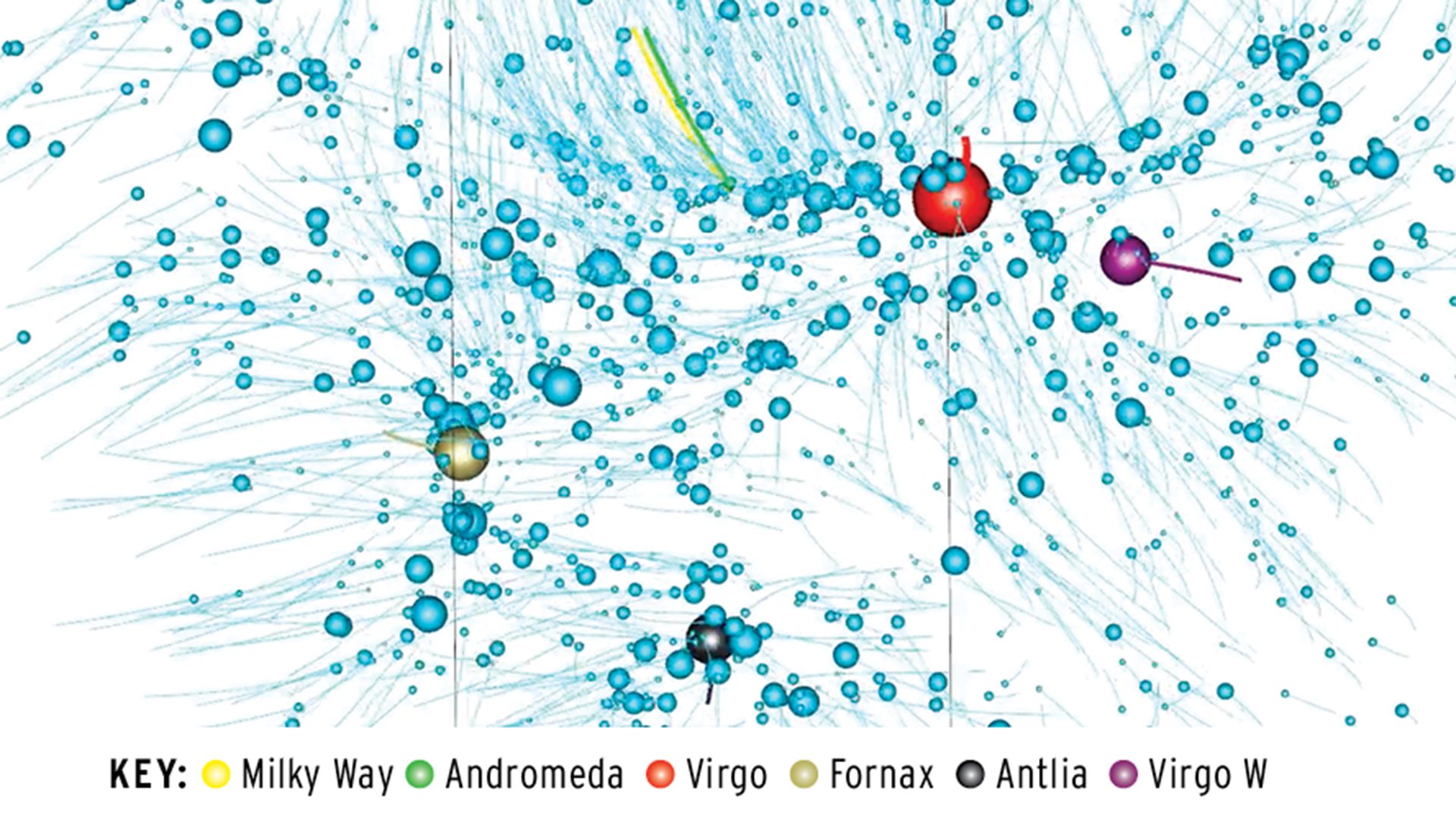- May 14, 2018
- By Chris Carroll
Some of us can’t keep track of where we laid our keys 10 minutes ago. Then there’s Ed Shaya, a University of Maryland associate research scientist, who can pinpoint where our entire galaxy was—along with more than 1,000 others in our corner of the universe—10 billion years ago.
He led a group of astronomers hailing from Hawaii, Israel and France in producing the most detailed and dynamic map ever of galaxies within about 100 million light years of Earth, a region known as the Local Supercluster.
Created using a new method of celestial mechanics called numerical action, which Shaya recently helped develop, the map shows how gravitational interactions directed galaxies’ collective flow through space stretching back nearly to the Big Bang.
The study appeared in the Astrophysical Journal in December, accompanied by a video and interactive model of the supercluster that went viral in science circles with tens of thousands of views online—not new-Beyoncé-video-viral, perhaps, but impressive for an astronomical simulation.
Though fascinating, knowing where the Milky Way came from (a vast void now empty of galaxies) or where it’s going over the next few billion years (a stupendous collision with nearby Andromeda, while most neighboring galaxies get pulled into a tight huddle around the Virgo cluster) isn’t the study’s point.
Instead, it’s aimed at revealing the distribution of an as-yet unobservable but crucial player in the cosmological game.
“The real goal of the project is to understand dark matter,” Shaya says. “The structures of the universe are mainly composed of dark matter. The stars are just the glitter paint that we can see in the dark. We want to know about all the parts that are not painted.”
